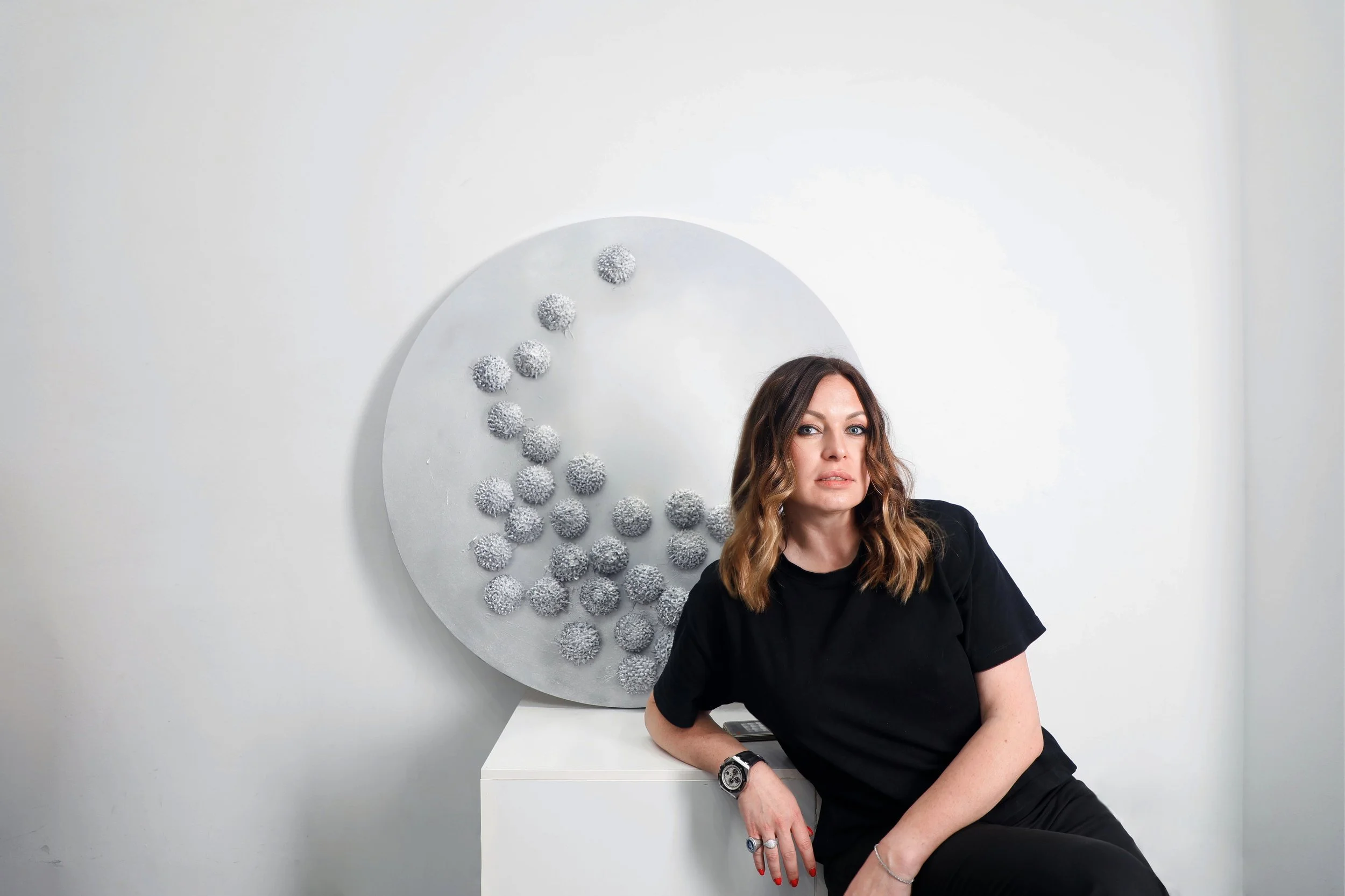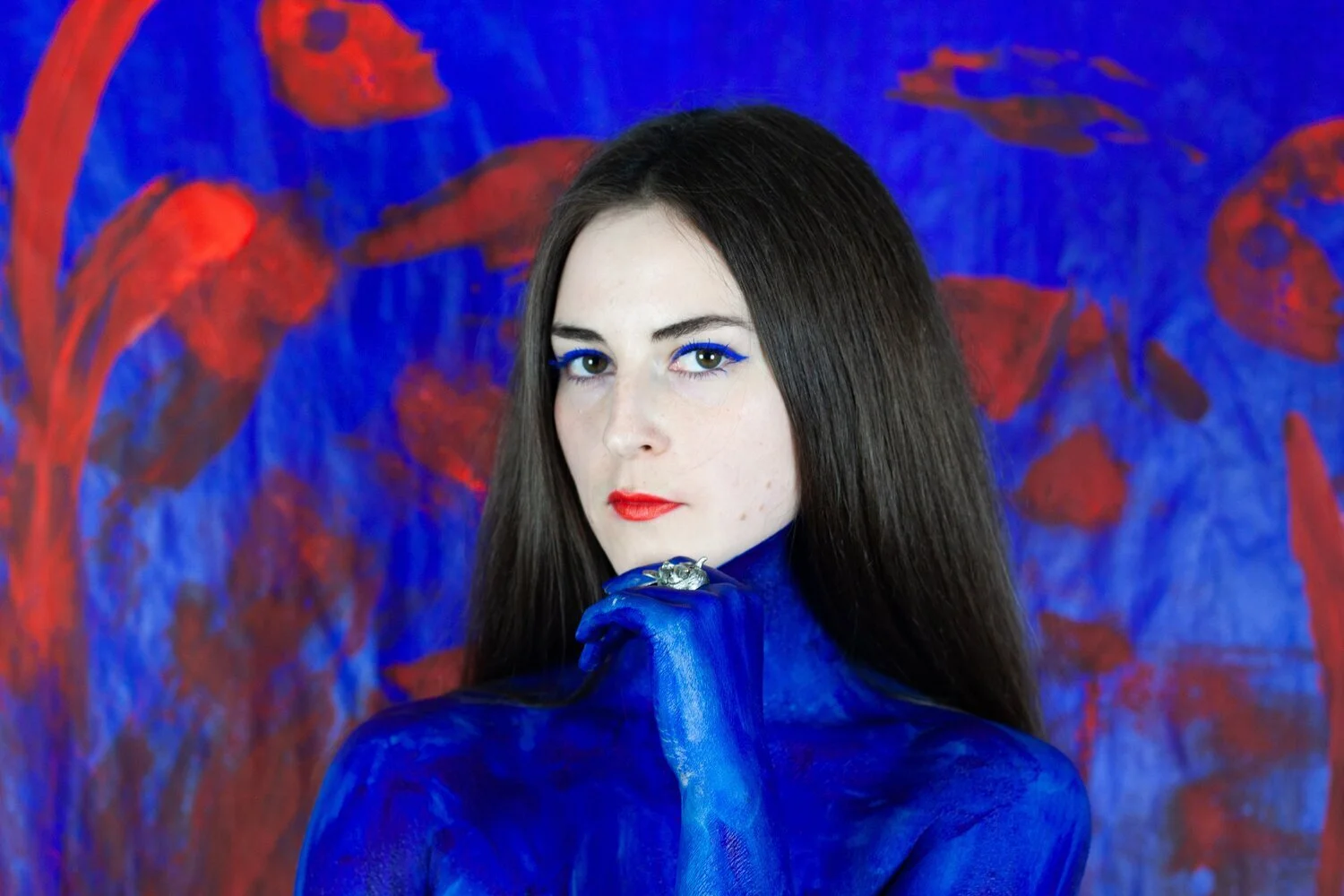9 Questions with Dina Alexis Cline
Dina Alexis Cline is a painter from Hawaii featured in Al-Tiba9 magazine ISSUE04, interviewed by Mohamed Benhadj.
Dina Alexis Cline works are critical engagements with philosophical principals of aesthetics and questions of existentialism, which in practice means that my subject matter and artistic interpretations are continually evolving.
Much of her early work was inspired by places and cultures she interacted with. Throughout her practice, color has been a profound element, functioning as the language with which she can communicate her shifting thoughts. More recently, Dina Cline's painting has engaged with issues of psychology and mental health, as well as notions of the existence of God. Dina Cline's subject matter develops a narrative arc from series to series as a result of her different emotional states and thoughts she finds intriguing enough to explore deeply with her medium.
Photo courtesy Dina Cline©
What intentions shape your art? How do you successfully express these intentions?
My intentions are always the same, regardless of the series’ theme: I try to discover myself or the world around me. Then, I show my discovery to the viewer to forces meaningful interactions with the piece.
Can you tell us about your formative years as an artist?
I feel like I’ll forever be in my formative years. If you aren’t continually challenging yourself, you’ll never push creative boundaries. I’ve been an artist as long as I can remember - I spent a lot of time alone during childhood, and used art as a way to pass the time. In university, I’d be in the art buildings longer than any of the other students. After I tried out a few jobs and traveled the world, I suppose I just decided to actualize what I wanted in this life: to paint.
There is an excellent variety of paintings in today’s market - how do you differentiate yours from others? What do you feel makes your work truly unique to you?
My work is very emotional, even in the darker pieces, that I don’t see much in the marketplace. I also think there is something brave about the work - it’s very vulnerable. I try to stay away from using non-archival materials. I learned from a Living Master that material choice is essential to the artist as well as the collector. I work very hard at producing quality work that will last as long as possible.
Your paintings are mostly landscapes, your subjects are the sunrise, sunset and the ocean. Can you describe your process for us? For example, do you begin with taking photographs and then paint them to represent your vision of their reality, or do you paint directly from life?
I actually don’t paint many landscapes these days. Expanding is still open as a series because I’m occasionally inspired to paint one, but I’ve mostly moved on to different bodies of work. I do not use photographs to paint from - they aren’t even specific places. They are more about the use of color. Typically, I select colors based on mood; the seascapes appear from those moods, as do most of my paintings. Every shade of every color has a feeling. I think I identify with them all individually as well as together in a composition.
Photo courtesy Dina Cline©
Photo courtesy Dina Cline©
In what ways do your paintings differ, in focus or in representation, from photography?
I don’t think they are anything like photography. I don’t think photography could ever capture that human vulnerability in the way painting does. With nature photography, you’re photographing things as they are. You can attempt to manipulate the photographs, but ultimately, you’re not making all of the choices. With painting, every single element of a piece was a choice by an individual mind with unique experiences and perspectives. I believe that paintings are more complex than photographs, but I’m obviously a little biased.
Is there a crucial element in creating a painting that successfully reflects your vision? If so, what is it?
Light, color - it’s a balance. I was watching an old interview with Helen Frankenthaler, and she said something that resonated with me: “If it works, it works…you either have it, or you don’t.” I suppose my state of mind is a crucial element. I have to be in my own head, and I have to be really present there for the paintings to come out well.
What do you wish you knew about artistic creation, especially when it comes to painting before you got started?
I wish I had listened to myself earlier in life. I knew exactly what I wanted to be all along, but society has a way of making artists second guess their career choices. I do think there might be people that enter the marketplace and are a bit delusional… but I knew I could paint it. I wasn’t afraid of painting, I was scared of failing. Now I know that I’m only failing if I’m not painting. There are probably business things I wish I had known before I went full time. I live for the creative process, so knowing things in retrospect probably wouldn’t have changed the outcome of my life.
If you listen to music, what is your favorite genre while working? Does it depend on the subject or circumstance in the process?
I listen to entire albums usually. I listen to a lot of hip hop- Mac Miller has basically been on repeat. I hear a lot of classic rock: Zeppelin, Fleetwood, The Rolling Stones. I find a lot of new music on NPR’s Tiny Desk, as well as scouting my friends’ playlists on Spotify. I also like to paint while listening to classical music from time to time. I can rarely work without music. I rely on it; in a way, it helps me focus.
Do you have any upcoming shows or collaborations that particularly excite you?
Yes! Maui Open Studios in Haiku is coming up in the middle of Feb. 2020. I have opportunities to show in NYC again, but I’m going to spend a lot of this year trying to build up inventory. I’d love to gather enough work for a solo show for my new series Trying To Believe, or another called Sub/Conscious.




















